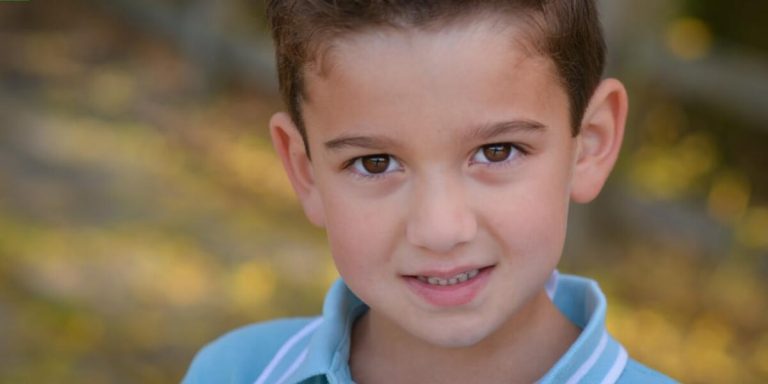PRP Hair Treatment for Hair Loss: A Comprehensive Guide to Understanding the Procedure
PRP hair treatment for hair loss has emerged as a revolutionary solution in the realm of trichology. Regarded as one of the most effective non-surgical treatments, it utilizes your own plasma to stimulate and rejuvenate hair regrowth at a cellular level. With its essence rooted deep into science and dermatology, understanding PRP therapy can be quite complex.
This comprehensive guide aims to address this by breaking down intricate aspects related to PRP (Platelet-Rich Plasma) treatment for hair loss; including how it works, what makes you an ideal candidate for it, expected results and potential side effects if any. As we delve deeper into these facets, you’ll gain insights about why so many people are turning towards this procedure in their fight against thinning or falling strands.
Did you know?
Little known fact: The PRP hair treatment procedure was initially utilized in the 1980s for wound healing, and it wasn’t until recent years that its potential benefits for treating hair loss were discovered.
Understanding PRP Hair Treatment for Combatting Hair Loss
Platelet-rich plasma (PRP) therapy has emerged as one of the most promising solutions for tackling hair loss in 2023. This groundbreaking treatment, originating from regenerative medicine studies, harnesses your body’s own healing properties to stimulate hair growth and combat thinning or balding areas on your scalp.
The science behind PRP is simple yet profound. It utilizes a concentrated serum processed from your blood, which contains high levels of platelets—cells known for their restorative abilities. In this non-surgical procedure, the healthcare professional extracts a small amount of the patient’s blood and uses centrifugation to separate and concentrate these valuable platelets. The result is an infusion rich with multiple growth factors that catalyze tissue repair when reintroduced into problem areas on the scalp.
However remarkable it may sound, what truly sets PRP apart lies not only in its capacity to encourage new follicular growth but also strengthen existing ones by nourishing them at a cellular level. This dual action works harmoniously towards restoring vitality back into dull locks while maximizing volume throughout making it robust approach particularly suited for those dealing with hereditary patterns of baldness.
The Science Behind Platelet-Rich Plasma (PRP) Therapy
Platelet-Rich Plasma (PRP) therapy is a revolutionary hair loss treatment that’s become increasingly popular over recent years. Famed for its effectiveness and non-invasive nature, PRP aims to combat thinning hair by promoting follicular regeneration.
So, what exactly forms the crux of this treatment? It all revolves around platelets – tiny blood cells with significant healing properties. The procedure utilizes your own platelets in higher concentrations than usual to stimulate dormant hair follicles activating their growth cycle again.
The process starts with drawing a small amount of your blood which then undergoes centrifugation where it separates into distinct layers – red and white blood cells, plasma, and highly concentrated platelets. This ‘platelet-rich’ part of the mix is reintroduced into your scalp via injections at areas exhibiting noticeable hair loss or thinning.
But how are these humble components so pivotal against battling baldness? To understand this we need delve slightly deeper into our body’s natural repair mechanism.
Now take this concept onto scalp level: envisage each injection puncture as ‘micro injury’ triggering same regenerative mechanisms on patchy zones thus spurring active restoration rejuvenated hairs providing thicker fuller looking head coverage overtime!
Comparing PRP to Other Hair Restoration Methods
PRP (Platelet-Rich Plasma) therapy has emerged as a popular hair restoration treatment in recent times. It stands out from other methods due to several key factors, which we’ll delve into below.
Starting with its principle of operation: PRP capitalizes on the growth factors contained in human blood platelets. These enriching elements are injected into scalp areas showing signs of thinning or baldness, aiding natural hair regeneration and strengthening existing strands.
Alternative treatments like Finasteride or Minoxidil significantly contrast with PRP as they necessitate daily application and may cause side effects such as skin irritation, in addition to ongoing financial costs. Meanwhile, PRP only involves periodic sessions, offering user comfort and practicality while minimizing potential side effects. Its derivation from your own bodily substances rules out the risk of allergic reactions common with synthetic products.
Next up is the Hair Transplant method—a surgical procedure involving transplantation of hair follicles from denser regions to sparse ones. While this offers permanent results akin to PRP’s longevity promise, it involves invasive surgery often accompanied by discomfort during postoperative recovery—something absent in almost painless PRP process executed under local anesthesia thus promoting faster recovery timeframes.
Step-by-Step Process of Undergoing a PRP Procedure for Hair Regrowth
Undergoing a Platelet-Rich Plasma (PRP) procedure is an increasingly popular treatment for hair loss in 2023 due to its benefits of stimulating natural hair growth and boosting the strength of your existing strands. It’s important, however, to understand that this process isn’t an overnight solution but rather requires time and patience as it involves using your body’s own healing mechanisms.
The first step entails drawing blood from the patient where it’s then placed into a centrifuge machine. This high-speed spinning device works by separating different components within blood samples: plasma rich in platelets is isolated from other elements like red and white cells. Remember when you were promised ‘no-trickery’, pure science-based approach?
That promise stands true here — PRP leverages our bodies’ features at their best!
Following centrifugation, doctors extract the golden-hued nutrient-dense component known commonly as liquid gold – another name used interchangeably with PRP owing to its therapeutic potential– which consists largely of platelets mixed with a small volume of plasma . The extracted PRP is now ready for injection! Doctors will apply topical anesthesia onto the scalp area planned for rejuvenation before injecting meticulously measured amounts under guidance-led precision.
Preparing for Your First PRP Session
Begin your journey to combat hair loss with Platelet-Rich Plasma (PRP) therapy by understanding what it entails. Prepare for your first PRP session by completing these six key tasks:
1. Understanding the Procedure: Before embarking on any medical process, getting well-informed is vital. For a PRP session, This involves understanding how the procedure works – from extracting blood samples which are spun in centrifuge to separate platelets that will then be injected into balding regions of your scalp.
2. Meeting Your Doctor: It’s recommended that you meet with your doctor for an initial consultation where they can assess your suitability for the treatment based on factors like genetics or underlying health conditions affecting hair growth patterns.
5.Practice Patience :Bear In mind Rome was not built in a day.Hair re-growth via PRPs may take up till eight months so patients need patience before maximum improvements start showing .
What to Expect During the Treatment: A Patient’s Guide
Platelet-Rich Plasma (PRP) is a ground-breaking treatment in combating hair loss and promoting regrowth. It’s hinged on your blood’s healing properties—specifically, the platelets within it.
We’ve developed this comprehensive guide to detail each step of the PRP treatment procedure for hair loss in 2023.
1. Consultation: Before diving into any procedure, medical professionals will conduct thorough consultations ensuring patients understand potential outcomes and risks associated with PRP treatments.
2. Blood Drawn: The first active stage involves having your blood drawn just like during standard lab tests; around 15-60 ml depending on individual patient requirements.
Your collected sample goes through centrifugation to separate red cells from plasma-rich platelets. These platelets are essential for regeneration and repair processes, including:
- Transforming growth factor-beta activation
- Cell proliferation induction
- Collagen production at dermal papilla levels
- Facilitation of follicular generation
- Enhancement of overall scalp health
This process reinvigorates dormant endothelial stem cells, encouraging the growth of more abundant and luxurious healthy hair faster than ever before!
Evaluating the Effectiveness and Outcomes of PRP Treatments
The effectiveness and outcomes of Platelet-Rich Plasma (PRP) treatments for hair loss have been a subject of ongoing research, with the most recent studies hinting at promising results. PRP therapy taps into your body’s natural healing capabilities by utilizing an enriched portion of your own blood to stimulate cell regeneration – it is this unique aspect that has made PRP a popular choice among dermatologists globally.
Understanding its function comes easily when breaking down the term; ‘Platelet-rich plasma’ refers to our blood’s component high in growth factors, which are potentially restorative particles crucial for wound healing and tissue repair processes. In PRP treatment for hair loss, specialists reinfuse this plasma concoction back into areas showing thinning or baldness on the scalp intending to rejuvenate inactive or weakened follicles.
Patients often report improvements over time with consistent sessions, but individual experiences can greatly vary due to genetic differences and overall health. Typically, new sprouts may appear along previously barren paths several months after treatment, increasing thickness across their manes. Moreover, progress continues even after reaching desired volumes; regular maintenance sessions help maintain momentum towards healthier hair.
Tracking Results: How Long Until You See Improvement?
In the world of hair loss treatments, PRP or Platelet-Rich Plasma therapy has gained significant attention. Particularly for those grappling with the problem of thinning hair or baldness, tracking results is pivotal. Here’s a detailed analysis on “How Long Until You See Improvement?” after undergoing a PRP treatment.
The effectiveness of any treatment can be gauged only after sufficient time post-treatment. With PRP being no exception to this rule, it takes around two to three months before you start noticing any substantial changes in your hair growth pattern.
Firstly comes shedding: New hairs pushing out old ones marks the initial stage – happening roughly four weeks post-PRP session – don’t panic! It’s completely normal and signifies that newer stronger strands are replacing older weaker ones.
Next up is regrowth: The exciting part begins when new baby hairs start sprouting at approximately two months following the procedure—you are now starting to reap benefits from this ingenious application!
Density improvement follows as thicker locks begin appearing three-four months afterward—a noticeable difference will certainly make heads turn in admiration!
Lastly comes maturity where lush full-bodied manes reach their peak six-eighteen months down—this gradual but evident transformation would validate all efforts put forth so far!
Analyzing Patient Satisfaction and Success Stories
The widespread approval of PRP (Platelet-rich plasma) hair treatment for hair loss has been majorly influenced by a multitude of success stories and patient satisfaction reports. To understand the magnitude, let’s delve into some notable ones.
John, a 30-year-old software engineer, shares his experience with an innovative therapy for baldness and thinning hair. He found it distressing to see strands of his hair on his pillow each morning. However, after trying PRP treatments:
- His worrying patches filled up.
- The previously barren areas became thick with growth.
- It is now nearly impossible to spot any thin areas.
After several sessions spaced over months starting in early 2023, John now boasts a fuller head of hair.
Responses like Jennifer’s are equally heartening. She started her journey to restore her luscious locks with much skepticism, due to past failures with traditional therapies and products that claimed miracle cures for receding hairlines. Yet today, when you compare pictures from before she began the platelet infusions to recent shots, you can clearly see baby hairs sprouting along her forehead line, leaving no doubt about the effectiveness of PRPs!
Conclusion
In culmination, PRP hair treatment for hair loss appears to be a promising solution in the battle against thinning locks. It’s an innovative method that uses your body’s own healing powers and has been applauded as a natural approach to stimulating rejuvenated growth.
Craving more insights on various Hair Loss Treatments? We invite you to unravel the mysteries of baldness by browsing around our website. Ascend into knowledge about everything from clinical treatments, home remedies, lifestyle changes or the latest scientific breakthroughs.
Here’s hoping you take charge and start your journey towards great tresses today!







